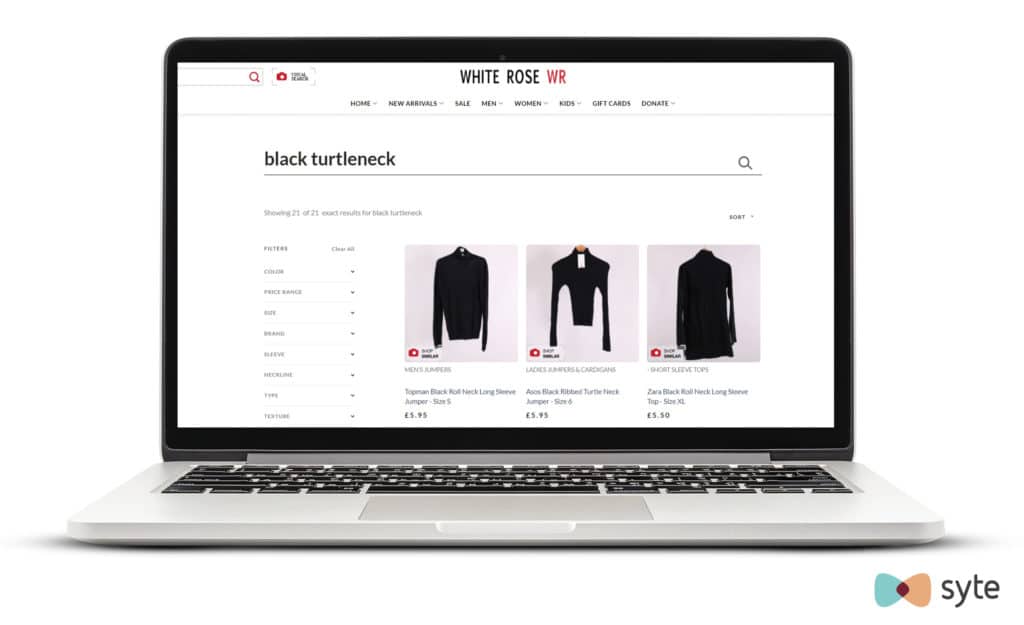Deep tagging is the process of creating and assigning tags to the items in your inventory in order to simplify and enhance product attribution. This used to be a manual process but with visual AI, the features are automatically identified from images using computer vision and machine learning, which are two fields of artificial intelligence (AI).
Some examples of product tags are color, size, brand, and style; but you can get much more detailed tags with vertical-specific lexicons and labels. The rich product attributes are then used to describe items, show relevant search results, create categories, and structure your website navigation.
Why Does Deep Tagging Matter?
Deep tagging ensures that product tags are accurate, organized, and always up to date. This guarantees that shoppers get the most accurate product search results any way they choose to explore your inventory. Having robust product tags is not only beneficial to on-site product discovery, it also helps lead customers from external search engines or websites to the relevant page on your site.
Deep tagging is also extremely useful for optimizing online merchandising. You can feature items more accurately and set up dynamic collections or promotions based on product attributes so that shoppers don’t miss out on sales or relevant products due to irrelevant and static site pages.
Finally, organized product tags are a great source of consumer and product insights that can inform inventory management, personalization efforts, and broader business decisions.
 White Rose’s augmented site search results for ‘black turtleneck’ powered by deep tagging
White Rose’s augmented site search results for ‘black turtleneck’ powered by deep tagging
How Deep Tagging Works
The way deep tagging works is straightforward. It begins with product images that are processed by visual AI. The AI model recognizes the different elements, breaks them down, and then accurately assigns attributes.
On top of rich, vertical-focused lexicons, the tagging process also includes different ways to describe the same item so that customers can discover all relevant products even if they search using a different keyword.
The Benefits of Deep Tagging
Deep tagging offers multiple benefits that impact not only the customer experience but also your backend operations. For example:
- It offers more accurate and relevant search results – Deep tagging ensures that shoppers find what they’re looking for even when they enter synonyms or thematic queries (for instance, “party dress” or “summery top”) since each product has so many possible attributes and synonyms. Search users are some of the highest-intent shoppers, and by surfacing products that match what they have in mind, you not only improve the shopping experience but also increase search-generated conversions.
- It provides better personalization experiences –The data you gather from product tags can help you understand the particular details that make shoppers engage with and buy individual items. Moreover, you can uncover consumer preferences based on searches linked to specific product tags. With these new sets of data, you’ll be in a better position to deliver more personalized experiences in everything from on-site product recommendations to email campaigns.
- It creates a streamlined process that improves efficiency – Because deep tagging is done automatically, categorization of attributes and labels is more consistent compared to manual product tagging. You not only save time and prevent human error, you can also reduce your costs when dealing with thousands of SKUs coming from different brands.
- It optimizes catalog and inventory management – Accurate and detailed tags provide data-driven insights not only on the general performance of products but also the finer details, such as the popularity of an item’s specific pattern, length, or cut. Having this in-depth information can help you to better predict demand, inform product development, and make sound business decisions.